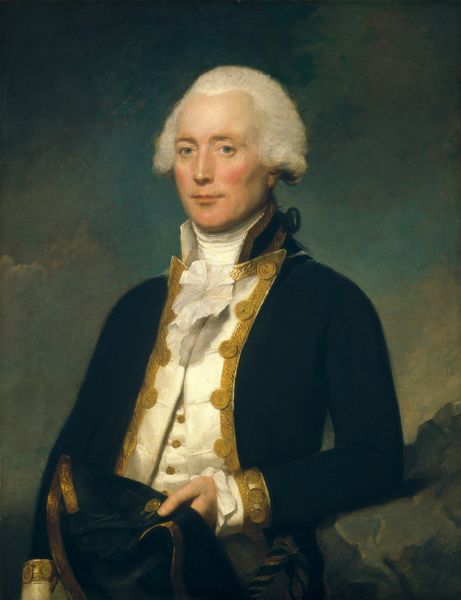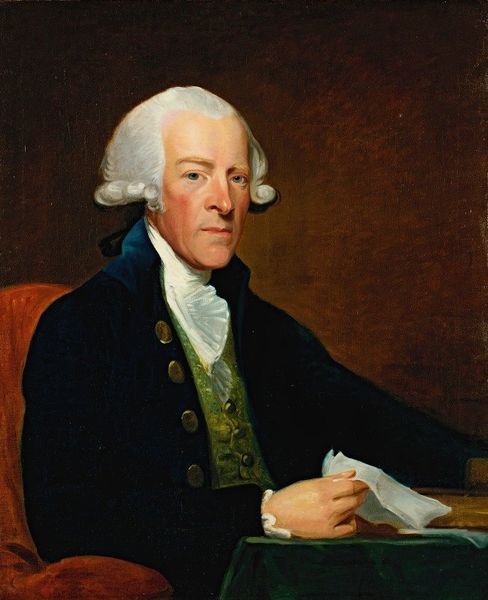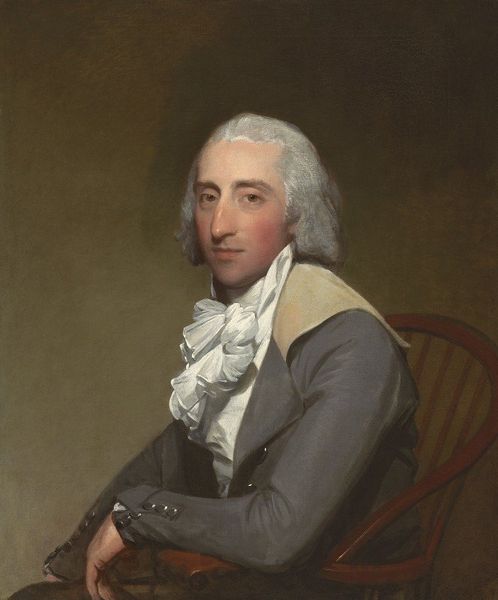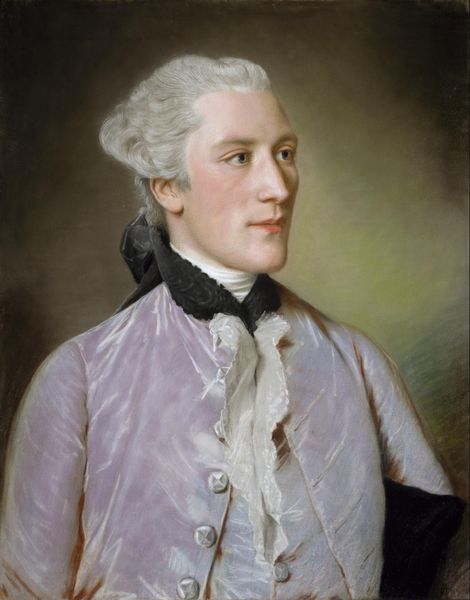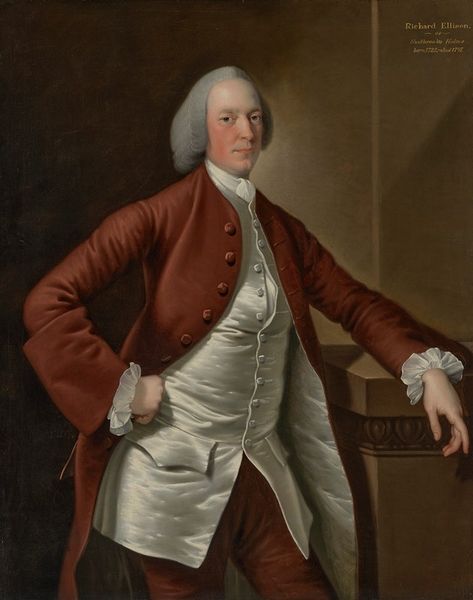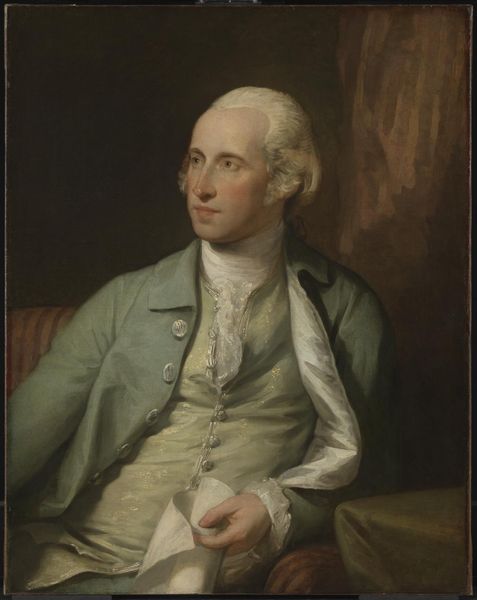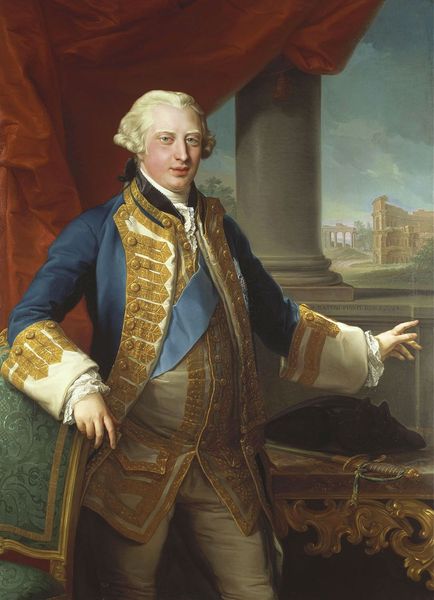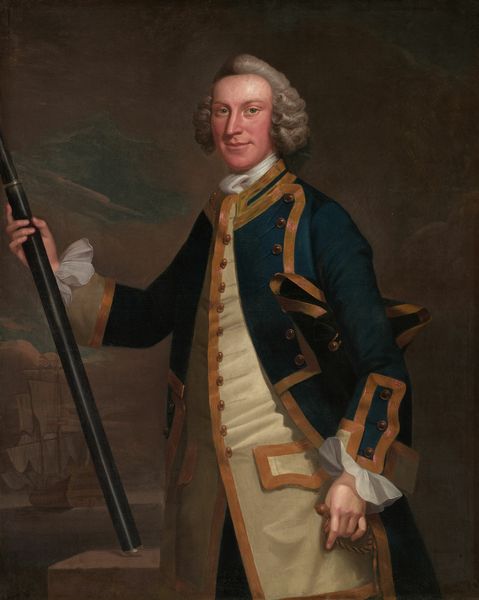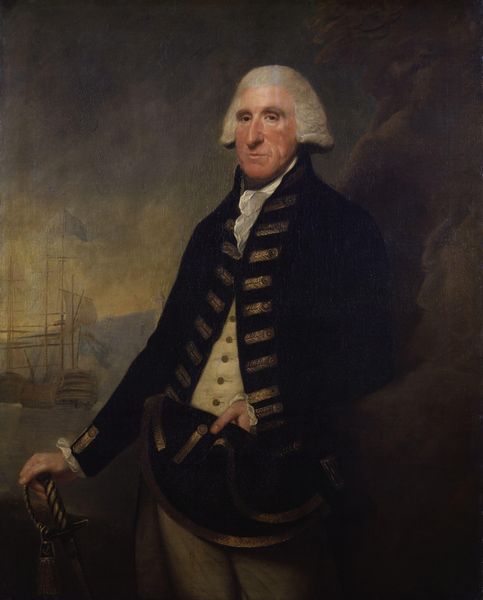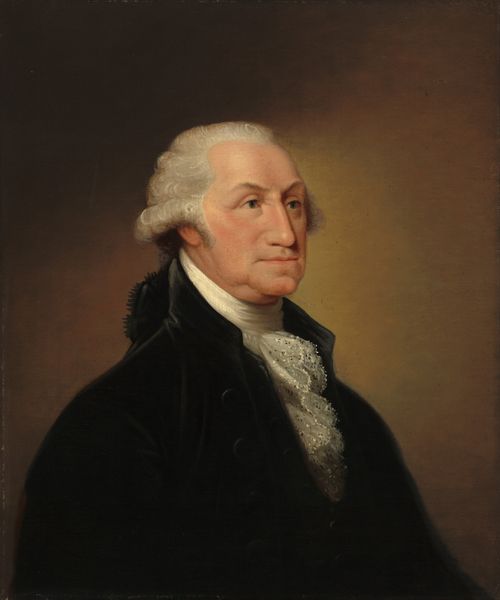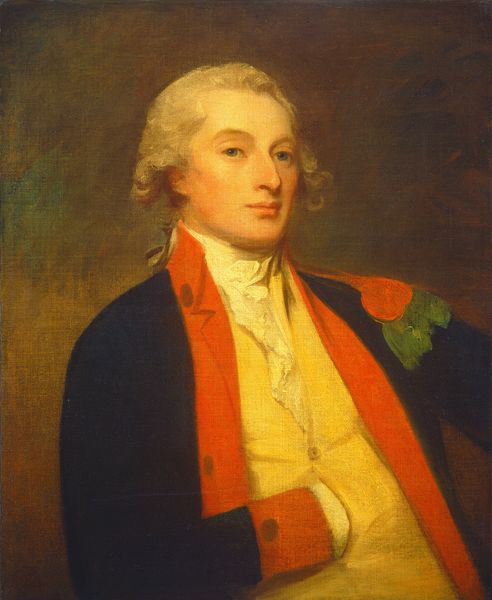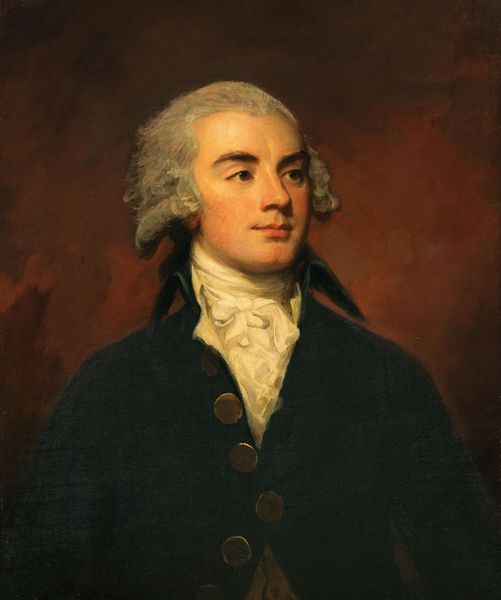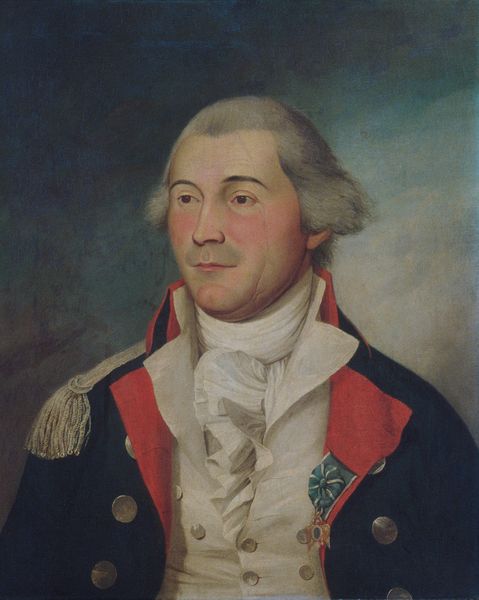
painting
#
portrait
#
portrait image
#
portrait
#
painting
#
portrait reference
#
portrait head and shoulder
#
classicism
#
animal drawing portrait
#
portrait drawing
#
facial portrait
#
academic-art
#
portrait art
#
fine art portrait
#
realism
#
digital portrait
Copyright: Public domain
Curator: Here we have a portrait of the architect Louis-François Petit-Radel, by Joseph Duplessis. What are your initial impressions? Editor: Stark. The way the muted greys and yellows are arranged suggests a reserve, almost as if we are seeing him through the gauze of his social standing. There is a palpable seriousness in the interplay of the vest and jacket’s colors. Curator: I find it intriguing that Petit-Radel, known for his contributions to neoclassical architecture, is captured here not amidst columns and blueprints but as an individual. The turn of his head suggests a moment of contemplation or perhaps alertness. The painting becomes a symbol of the individual creative force. Editor: Notice the brushstrokes – they aren't perfectly smooth, which lends a textural richness that mitigates the stiffness. Look closely at the layering; the application feels deliberate, building up to a sense of weight and presence despite the restricted palette. Curator: The subject's attire is interesting from a symbolic perspective, speaking to both status and intellect. The powdered wig and tailored jacket were, of course, markers of social position, but within that, a certain restrained elegance can also imply dedication to his profession and personal cultivation. The portrait, in effect, shows us what the rising bourgeois wants to be known for. Editor: I agree. While adhering to convention, Duplessis uses compositional choices – a certain softness around the edges of the figure, the almost hazy backdrop – to stop it from being a completely stuffy image of power. Curator: It makes me wonder, too, about the cultural memory encoded in the act of portraiture itself. It serves as an echo of ancient ideals. Petit-Radel is consciously associating himself with tradition. Editor: Perhaps that is where he locates meaning, connecting himself, literally framing himself, in the larger classical narrative through careful use of visual elements. Curator: The image suggests both pride and seriousness. Considering this portrait, it invites reflection on how we curate our own symbolic presence. Editor: An insightful summary. Yes, considering the form and intent, one gets an engaging insight into the essence of that period, an era transitioning between aristocracy and the influence of an intellectual and industrious elite.
Comments
No comments
Be the first to comment and join the conversation on the ultimate creative platform.
